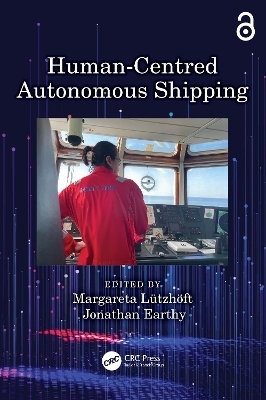
Human-Centred Autonomous Shipping
CRC Press (Verlag)
978-1-032-54989-7 (ISBN)
Tracing the development of autonomous and automated shipping from a hype of unmanned ships to a more realistic use of automation to augment humans in maritime operations, this book shows why human factors and human-centred design are essential to the endeavour.
Themes addressed in the book include technology and cybersecurity, regulation and classification, and competence and skills. It combines commentary and insight from experts across the industry as well as academia and describes a roller-coaster ride from conceptual idea via a period of hype where technologists and engineers enthusiastically advocated a rapid development as many others in the maritime industry felt compelled, but struggled, to follow and finally to a more measured view as cumulative experience started to show the limitations, risks, and the lack of a generic business case.
This book is intended for anyone working in, researching in, or simply interested in shipping and the maritime domain and the evolution of autonomous shipping. The target audience includes regulators, educators, researchers, engineers, and manufacturers.
The Open Access version of this book, available at http://www.taylorfrancis.com, has been made available under a Creative Commons Attribution-Non Commercial-No Derivatives (CC-BY-NC-ND) 4.0 license
Margareta Lützhöft is a master mariner, trained at Kalmar Maritime Academy in Sweden. She currently holds a position as Professor in the MarSafe group at the Western Norway University of Applied Sciences. She is also an adjunct Professor at the department of Marine Engineering, General Sir John Kotelawala Defence University, Sri Lanka, and a fellow of the Nautical Institute. Her research interests include human-centred design and the effects of new technology and automation. She is co-editor of Managing Maritime Safety, published by Routledge. Jonathan Earthy, Human Factors Coordinator at Lloyd's Register (LR) Technical Directorate is LR's technical authority for human factors and leads the introduction of Ergonomics into Class. He is also a Professor II at the University of Western Norway. He was technical supervisor of the award-winning LRF Alert! human element awareness-raising initiative and is chair of ISO TC159/SC4 Ergonomics of human-system interaction, as well as a member of the SIGTTO Human Element Focus Group, the Maritime CHIRP Advisory Board, the IMarEST Human Element and MASS SIGs, and the IMO MASS Correspondence Group.
1. Introduction. 2. Life at Sea, 2020 and in the future. 3. The HUMANE approach. 4. Technology, cyber, smart ships and humans. 5. Legal, regulatory and humans. 6. Skills and competence. 7. Autonomous Shipping revisited. 8. Industrial and regulatory progress. 9. Maritime Smart Technology Ecosystem. 10. Maritime autonomy fit for people. 11. An ethnographic perspective of autonomy. 12. MASS is everywhere – or is it?. 13. Overview of recent research. 14. Epilogue.
| Erscheinungsdatum | 07.11.2023 |
|---|---|
| Zusatzinfo | 32 Line drawings, black and white; 32 Illustrations, black and white |
| Verlagsort | London |
| Sprache | englisch |
| Maße | 156 x 234 mm |
| Gewicht | 480 g |
| Themenwelt | Technik ► Bauwesen |
| Technik ► Umwelttechnik / Biotechnologie | |
| ISBN-10 | 1-032-54989-0 / 1032549890 |
| ISBN-13 | 978-1-032-54989-7 / 9781032549897 |
| Zustand | Neuware |
| Haben Sie eine Frage zum Produkt? |
aus dem Bereich


